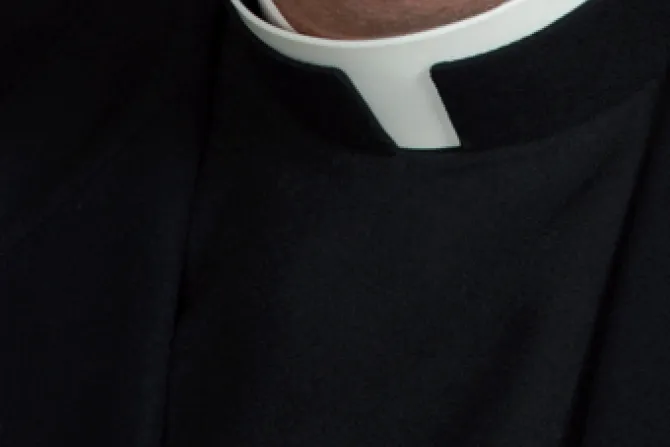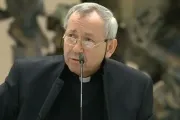The demon's angelic knowledge, he said, also means they are aware that God only permits their diabolical activities to bring about the salvation of people through "expiating suffering."
"These suffering people are becoming saints (by) the offering of their sacrifices" which God then receives and "blesses large parts of the Church around the world."
"When you remind the Devil of that it makes him furious," because he knows he is losing and hence "he wants to get what he can, while he can. If he can't win these peoples' souls, he wants to at least make their lives miserable."
So an exorcist dialogues with the devil?
"Yes, I ask them a series of questions: 'What's your name?' since when you use his name in a command it weakens him." Once a demon gives his name, the exorcist then tells him to "get out" and also might ask "how he got in and when he's going to leave."
"The last one, it's like they've all been coached with the same line, 'I'm never leaving,' but they will someday!"
The key is to limit dialogue, said the trainee exorcist. "You don't want to ask them questions just out of curiosity, that's not healthy."
It is also possible to "throw in things just to humiliate the demon," such as invoking the presence of saints, guardian angels and – most feared of all – Our Lady. It is then that "you can really see that there is a change in the behavior of the demon."
The end-game often comes when the devil start revealing himself in angry and violent outbursts, when "it is common that there is foaming at the mouth."
In the case of a curse being broken, the person will "start vomiting objects that were used in the curse or, you know, the vomit or saliva changes from clear to colored."
It is then the exorcist knows "I'm hitting home, that this is really being effective and so those are good signs. It's not pleasant to see, but you know that 'I'm being effective here.'"
(Story continues below)
Subscribe to our daily newsletter
The American exorcist-in-training explained that the causes of demonic influence vary from case to case and the impact of participating in evil practices also changes with each case.
But one factor that seems to be a common foundation for people coming under the sway of the Devil is "deep wounds in their lives and, above all, in their family," particularly where "parents have made really bad choices" and in doing so "have invited evil influence into their home."
He lists such things as "marital infidelity, abortion, doing things that break the family apart."
"What is the family?" he asked rhetorically, "A family is an icon; it's an image of the blessed Trinity, and so the devil hates the family."



